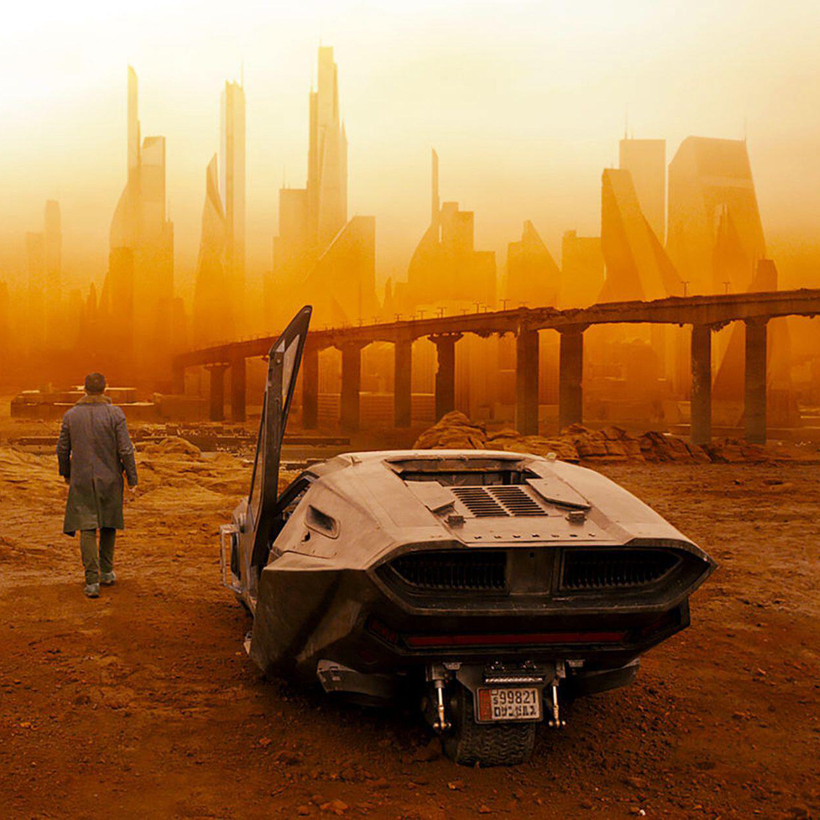Years ago, the master cinematographer Roger Deakins was scouting locations in Kenya for a 19th-century adventure film. He thought he’d finally found the desert panorama he needed, right near Lake Turkana, complete with villager huts nearby. Then he heard someone talking: “Yes, this was built for Vilmos … ” The authentic-looking housing, it turns out, was a set, constructed for the New Hollywood cinematographer of 1977’s Close Encounters of the Third Kind, Vilmos Zsigmond—to shoot a car commercial.
The story drives home the challenge for any ambitious cinematographer: how to create spellbinding images that people have never seen before. Nominated for 16 Oscars, and winning 2, Deakins is Hollywood’s cream of the crop, and his résumé is a catalogue of prestige wonders: apocalyptic futures (1984, Blade Runner 2049), epic dramas (The Shawshank Redemption), far-flung lands (Kundun), colorful small towns (Fargo), reimagined war zones (1917), and Western frontiers (The Assassination of Jesse James by the Coward Robert Ford, No Country for Old Men).

Just how he creates these visions could fill a book—and that book has now arrived in the form of Reflections: On Cinematography, written by Deakins himself. Charting his career from the student films of his 20s to his recent collaborations with director Sam Mendes (1917 and Empire of Light), it’s a chronological, narrated sourcebook of stills, lighting diagrams, storyboards, and gearhead minutiae. At 76, Deakins sounds eager to get all of his trade secrets down on paper—analyzing everything from the oil-field infernos of his Gulf War drama, Jarhead, to the bowling-ball cam of the stoner classic The Big Lebowski.
The straightforward nature of Reflections feels true to Deakins’s fondly remembered origins. He grew up in the seaside town of Torquay, in southwest England, fishing, watching film noirs on TV, and having his mind blown by Dr. Strangelove. His family had the elements of a motion-picture drama: his father was an explosives expert in World War II; his mother, an aspiring actress who developed multiple sclerosis, was immortalized in Kurt Hutton’s photo of two young women on a carnival ride in 1938, titled “Two at the Fair.”

In 1972, having discovered a knack for composing a photograph, Deakins enrolled in the National Film and Television School, in Beaconsfield, England. After graduating, he landed his first feature-film cinematography job on a 1977 Marquis de Sade adaptation called Cruel Passion. But documentaries turned out to be his true training ground for studio filmmaking, and where he learned to become the calm in the storm on hair-raising shoots. Also in 1977, he shot a film about the Rhodesian Bush War as part of a two-person crew posing as wildlife documentarians, during which time they learned to hide footage in a storm drain away from soldiers.
Yet the films Deakins went on to make aren’t seat-of-the-pants, shaky-camera hustles. Instead, the artistry of the image is the adventure. Consider The Shawshank Redemption (1994): Deakins achieved the transcendent shot of Tim Robbins emerging from the escape tunnel, bathed in artificial lightning flashes, by filming from above on a crane rig raised just a bit further than usual. And if that’s too Hollywood a climax for you, look at Deakins’s collaborations with the Coen brothers such as Barton Fink (1991), where he filmed the flaming hotel corridor with a handheld camera affixed to a pipe while he, his dolly grip, and the actors were slathered in “fire gel.” (His agent had been skeptical of the project at the start: “It’s two brothers. I don’t know them.” He would go on to collaborate with the pair on 11 more films, including The Big Lebowski and No Country for Old Men.)

But above all, like so much of filmmaking, Deakins’s vocation is a matter of creative solutions and workarounds. For the Brad Pitt–led Western, The Assassination of Jesse James by the Coward Robert Ford (2007), he acquired special lenses (later dubbed “Deakinizers”) to create a peephole effect. The World War I film 1917, released in 2019, simulates two long, continuous takes through the use of a special stabilizer and smaller Arri camera (dubbed “Camera X”). Yet Deakins takes care to avoid gimmickry or postcard prettiness, explaining his creed concisely: “I rarely like any effect that draws the viewer’s attention to the surface of the image rather than immersing them within it.”
If you’re looking for tidbits of Hollywood gossip, Deakins is admiring of technique but discreet beyond that—though there’s a funny anecdote about Val Kilmer losing his concentration on a deserted North Dakota shoot because some kid on a pickup truck miles away was in his sightline. Shooting the James Bond movie Skyfall (2012) with Daniel Craig sounds exciting, but Deakins was more preoccupied with how to handle all the reflective glass walls in the Shanghai-skyscraper scene. When the next Bond bonanza came round, the film’s director, Sam Mendes, ribbed him for choosing an “art film” instead. (It was another Coen brothers joint, Hail, Caesar!)
The 21st-century digital revolution only spurred Deakins to new frontiers. (He even ventured into animation in 2011 with Rango.) It took the Academy until 2017 to reward Deakins, for a doozy of a blockbuster: Blade Runner 2049, an indelible digital fantasia, at once spectacular and unheimlich in its orange-haze deserts and vertiginous, futuristic interiors. But Reflections underlines the practical technician underneath it all—the man who, for the crime thriller Sicario (2015), lit a cartel boss’s home with just a string of golf-ball light bulbs from Home Depot.
Nicolas Rapold is a New York–based writer and the former editor at Film Comment magazine

